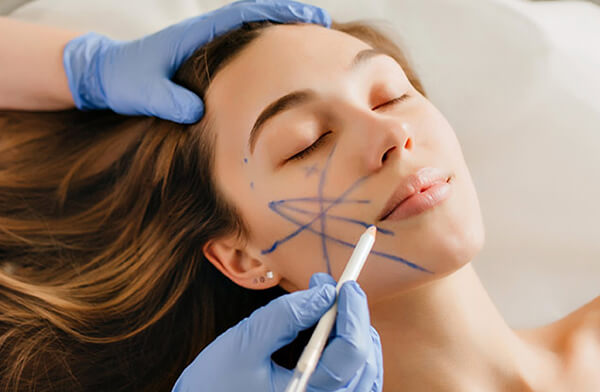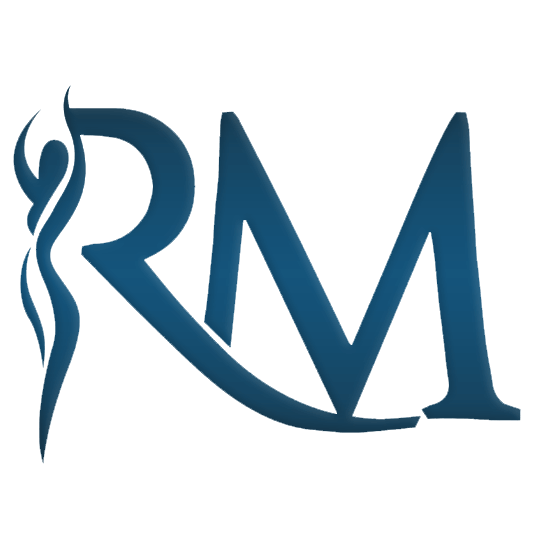Harley Street Medical Centre, Abu Dhabi
050 513 9016
02 613 3808
info@drrabihmaatouk.com
info@hsmc.ae

Face lift (rhytidectomy) is a cosmetic procedure that is designed to tighten and lift the skin on the face and neck. It is a popular procedure among those who want to achieve a more youthful or refreshed appearance.
There are several types of face lift procedures available, each designed to address specific concerns and achieve specific results. Here are some of the most common types of facelifts:
Traditional Facelift:
Also known as a full facelift, a traditional facelift is the most comprehensive option. It involves making incisions around the hairline, behind the ears, and under the chin, and then lifting and tightening the skin and underlying tissues of the face and neck. This procedure can address moderate to severe signs of aging and produce long-lasting results.
Mini Facelift:
A mini facelift, also known as a short scar facelift, is a less invasive option that targets the midface and lower face. It involves making smaller incisions around the ears and lifting and tightening the skin and muscles of the cheeks, jowls, and neck. This procedure can address mild to moderate signs of aging and produce natural-looking results with less downtime than a traditional facelift.
Mid Facelift:
A mid facelift is a procedure that focuses on the cheeks and the area around the eyes. It involves making incisions around the temples and lifting and repositioning the underlying tissues to restore volume and lift to the midface. This procedure can address hollowing under the eyes, sagging cheeks, and deep nasolabial folds.
Thread Facelift:
A thread facelift, also known as a non-surgical facelift, is a minimally invasive option that uses absorbable threads to lift and tighten the skin. The threads are inserted under the skin using a needle, and then pulled to lift and reposition the skin. This procedure can produce subtle results with less downtime than a surgical facelift, but the results may not last as long.
Lower Facelift:
A lower facelift is a procedure that targets the jawline and neck. It involves making incisions under the chin and around the ears and lifting and tightening the skin and muscles of the lower face and neck. This procedure can address jowls, sagging skin under the chin, and loose neck skin.
Anyone who is unhappy with the appearance of their face or neck due to sagging skin, wrinkles, or jowls may be a good candidate for a facelift.
A face lift is typically performed under general anesthesia, and the procedure can take several hours to complete. Depending on the extent of the surgery, you may need to stay in a clinic overnight for observation. After the surgery, you will need to wear a dressing or bandages to help your face heal properly.
Recovery can take several weeks, and you will need to avoid strenuous activities during this time. You may also experience swelling, bruising, and discomfort during the first few days after the surgery. Your surgeon will provide you with specific instructions on how to care for your face during the recovery process.
There are several types of face lift procedures available, each designed to address specific concerns and achieve specific results. Here are some of the most common types of facelifts:
Traditional Facelift:
Also known as a full facelift, a traditional facelift is the most comprehensive option. It involves making incisions around the hairline, behind the ears, and under the chin, and then lifting and tightening the skin and underlying tissues of the face and neck. This procedure can address moderate to severe signs of aging and produce long-lasting results.
Mini Facelift:
A mini facelift, also known as a short scar facelift, is a less invasive option that targets the midface and lower face. It involves making smaller incisions around the ears and lifting and tightening the skin and muscles of the cheeks, jowls, and neck. This procedure can address mild to moderate signs of aging and produce natural-looking results with less downtime than a traditional facelift.
Mid Facelift:
A mid facelift is a procedure that focuses on the cheeks and the area around the eyes. It involves making incisions around the temples and lifting and repositioning the underlying tissues to restore volume and lift to the midface. This procedure can address hollowing under the eyes, sagging cheeks, and deep nasolabial folds.
Thread Facelift:
A thread facelift, also known as a non-surgical facelift, is a minimally invasive option that uses absorbable threads to lift and tighten the skin. The threads are inserted under the skin using a needle, and then pulled to lift and reposition the skin. This procedure can produce subtle results with less downtime than a surgical facelift, but the results may not last as long.
Lower Facelift:
A lower facelift is a procedure that targets the jawline and neck. It involves making incisions under the chin and around the ears and lifting and tightening the skin and muscles of the lower face and neck. This procedure can address jowls, sagging skin under the chin, and loose neck skin.
Anyone who is unhappy with the appearance of their face or neck due to sagging skin, wrinkles, or jowls may be a good candidate for a facelift.
A face lift is typically performed under general anesthesia, and the procedure can take several hours to complete. Depending on the extent of the surgery, you may need to stay in a clinic overnight for observation. After the surgery, you will need to wear a dressing or bandages to help your face heal properly.
Recovery can take several weeks, and you will need to avoid strenuous activities during this time. You may also experience swelling, bruising, and discomfort during the first few days after the surgery. Your surgeon will provide you with specific instructions on how to care for your face during the recovery process.
